
南禅寺
Nanzenji ◆ ナンゼンジ
3.09
Gion, Kiyomizu-dera, Higashiyama
「Other」
--
--
Opening hours: 9:30-12:00 13:00-15:00 Open Sundays
Rest time: Open daily (closed to the public from 12/28 to 12/31) Hours and holidays are subject to change, so please check with the store before visiting.
京都府京都市左京区南禅寺福地町
Photos
(20)
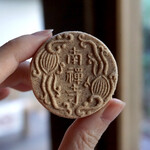
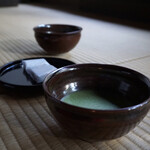
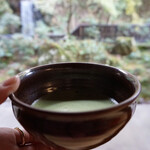
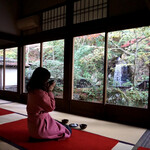
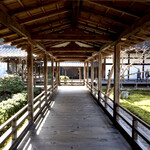
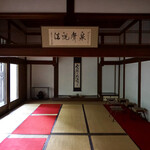
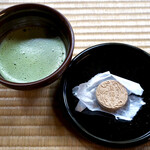


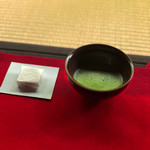
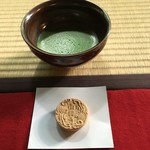
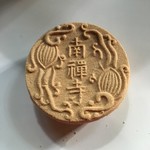
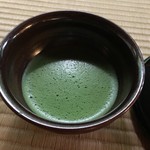
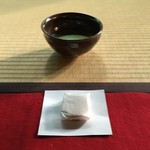
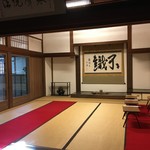

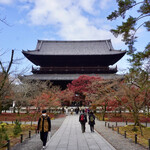
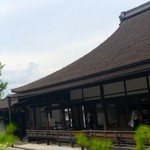


Details
Smoking and Non-Smoking
No smoking at the table
Facilities
Calm space
Comments
(9)
senac253
4.00
Instagram → Please follow megubooo☆ https://www.instagram.com/megubooo/. A little walk from Keage Station will lead you to Nanzenji Temple. What's wonderful about it is this Sanmon gate. Beyond the splendid gate that looks like a picture frame, you'll find a picturesque scene of autumn leaves. Passing through the Hondo, you'll reach the Honbo and Hojo Garden. The entrance fee is 500 yen, and tea service costs 500 yen. The Hojo is a building with a stone garden designated as a national treasure in 1953. After capturing the stone garden in photos and experiencing the important cultural property of the wall paintings, head to the Takinoma for matcha tea. The beautiful garden with a refreshing waterfall is truly cleansing for the soul. Although the autumn leaves season is almost over, some red leaves were still lingering. Enjoying matcha tea with kinako and sweet bean paste while surrounded by the tranquility of the temple is a delightful experience. Gazing at the waterfall and contemplating in the serenity, you may feel purified, but once you step outside, you'll realize the harsh reality of your worldly desires. It's difficult to rid oneself of desires. Nevertheless, I thoroughly enjoyed experiencing THE! Kyoto. I just love Kyoto, and I love Nanzenji Temple! It was so healing. Afterwards, I took a stroll, taking commemorative photos at the famous Biwako Sosui (waterway bridge) where actor Eiichiro Funakoshi appeared in a drama scene. This is definitely a sightseeing spot worth visiting. Matcha tea is served until 3 pm, with a break at noon. I visited just before 3 pm, but if you go, I recommend the morning when the sun shines on the garden.
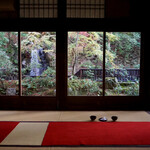


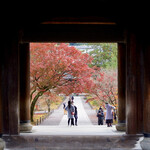
安倍太郎
4.00
I visited Nanzenji Temple located at the foot of the popular tourist spot Higashiyama in Kyoto on this day. Nanzenji is known for its Sanmon gate and Sosui aqueduct, but if you go further inside, you will find a dry landscape garden and a place to enjoy tea. I often visit when I come to Kyoto. It was a weekday during a break in the rainy season, so there were few visitors, and there was no overwhelming crowd like during cherry blossom or autumn foliage season. Personally, I love the fresh greenery of Kyoto the most, so I couldn't resist it! I recommend visiting Kyoto in the summer! Thank you for the delicious meal! ★3.12
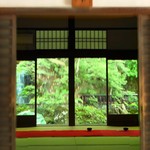

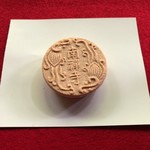
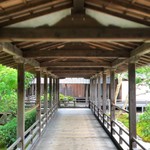
たろすけちゃん
3.20
This is a tea room located by the waterfall in the Hondo of Nanzenji Temple. It can get very crowded as it is on the way to the famous national treasure, the Hojo. However, this tea room was empty when I visited. Enjoying matcha while listening to the serene sound of the waterfall in the quiet and dimly lit room was truly special. I had a wonderful time. The matcha was ordinary, and the wagashi was made with kinako powder and had sweet red bean paste inside. It is made by "Kameya Seiei" in Teramachi Sanjo. It was a precious space where I could relax and take a breather.
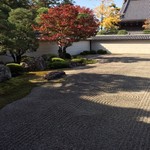
アルソマ
1.00
Usually, they serve a large group of people at once. This time, there were only about three people in the tea room. The sweets were just the right amount of sweetness for tired bodies. The problem was the tea. It was terrible. Serving lukewarm tea like this in cold weather, and with no foam. Even though it wasn't crowded. If it was served quickly to match the autumn scenery, and with a request to drink it quickly and make way for the next person, that would be more like Kyoto. But why serve it lukewarm when it's so empty!?
ぽろ
3.20
I visited in May 2018. It is located in the Hojo of Nanzenji Temple. Matcha tea costs 500 yen and comes with Nanzenji's sweets. Also, you need to pay an admission fee of 500 yen. Please note that they are closed for lunch from 12:00 to 13:00. At this tea house, you can enjoy matcha while looking at the garden with a waterfall. It is very mystical and relaxing. Time seems to pass slowly here. Since the Suirokaku Aqueduct is also nearby, I recommend having matcha here after visiting not only the Sanmon gate but also coming this far.
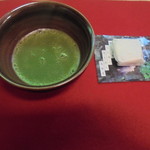
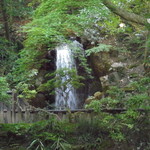
まろんママ
4.00
I met up with a friend who lives in New York and we walked around Kyoto together. It was a long-awaited reunion since they were visiting Kansai. We enjoyed sightseeing in Kyoto and Nara while indulging in delicious food. Nanzen-ji is a prestigious temple located atop the Kyoto Gozan and Kamakura Gozan, holding the highest status among all Zen temples in Japan. We climbed the steep stairs to the Sanmon gate, associated with the legendary thief Ishikawa Goemon, and enjoyed the breathtaking view (admission fee required). In New York, it's hard to find delicious Japanese sweets and matcha, so we decided to experience a tea ceremony here. The tea room is located next to the entrance of the Honbo building on the east side of Nanzen-ji. We purchased a matcha ticket as part of the Zen meditation hall tour package. The tea ceremony can be enjoyed before or after visiting the Zen meditation hall. After leisurely exploring the hall, we entered the room where about 10 foreign visitors were already seated. We sat on the opposite side of the spacious room, enjoying the view of the garden while waiting. The delicate and elegant sweets served were exquisite, with the kinako (toasted soybean flour) sweets adorned with "Nanzen-ji" written on them. These limited edition sweets from Nanzen-ji are made by Kameya Seiei. The matcha served was from Kakuda Koseien. The beautiful and delicious sweets are also available for purchase at the Zen meditation hall gift shop, and I plan to buy some to bring home.



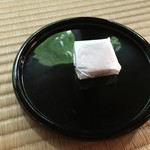
eb2002621
3.70
In July 2017, on the second day of my stay in Kyoto, I checked out of the "Seikaro" inn and visited Kodaiji Temple before heading to Nanzenji Temple. Although I have visited Nanzenji over 10 times, I had only seen the Sanmon gate, Hatto hall, and Lake Biwa Canal, and embarrassingly, I had never seen the main attraction, the Hojo hall, which is designated as a national treasure. So, this time, I visited the Hojo hall to receive a Goshuin stamp. After paying the admission fee and exploring the Hojo garden, I stopped by a tea room near the entrance of the Hojo hall to enjoy some matcha tea (an additional 500 yen per guest). From the tea room, I could admire the "Seiryu no Taki" waterfall, which was a refreshing sight on a hot and humid day. After a short wait, the matcha tea and sweet treat called rakugan arrived. The rakugan had "Nanzenji" written on one side and was a delicate and sweet confection made by "Kameya Seiei." It had a subtle sweetness that complemented the matcha tea perfectly, making it even more enjoyable. After this, I visited Tenjuan Temple where lotus flowers were beginning to bloom, and then headed to Kyoto Imperial Palace Gardens.
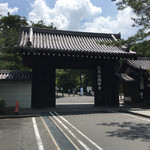
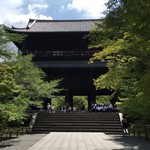
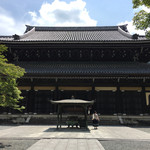
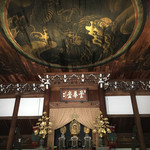
kinako-anko
3.60
On the second day of my trip, I stayed at a traditional inn in Kyoto and decided to leisurely visit temples that I had never been to before. I checked out of "Seikaro" at 9 am and first drove 2 km northeast to visit "Kodai-ji," the temple of Nene, the wife of Hideyoshi. I enjoyed "yamaimo manju" and matcha tea in the temple grounds before heading 3 km northeast to the famous autumn foliage spot, "Nanzen-ji." I parked my car at the temple's designated parking lot and explored the temple, including the impressive "Suiroukaku" water bridge designed by Sakuro Tanabe. I then paid the entrance fee and entered the main hall of Nanzen-ji to admire the beautiful garden. After that, I sat in the waterfall room (tea room) and enjoyed matcha tea and a special sweet called "Rakugan" made with kinako powder. The combination of the sweet and tea was delightful. Next, I will head to Kyoto Imperial Palace for more sightseeing. Enjoy your meal!
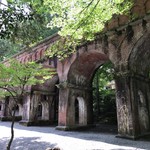
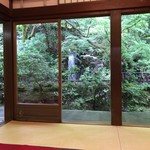


アルボス
3.90
The scenery of Nanzen-ji Temple against the backdrop of Kyoto's Higashiyama area is truly captivating. With its European romantic Meiji architecture, the arched aqueduct, the view from the 22-meter high Sanmon gate, the Cloud Dragon painting in the Hatto hall by the Kano school, and the Japanese garden by Kobori Enshu, Nanzen-ji Temple is a place that combines the beauty of nature with traditional and modern architectural aesthetics, attracting many visitors. The main hall of Nanzen-ji Temple houses a hidden gem called the "Waterfall Room," where you can enjoy matcha tea in a quiet and dimly lit setting, along with the admission to the garden. After receiving your ticket, you will be seated on a tatami mat with a view of the lush greenery and the soothing sound of the "cooling waterfall" in front of you. Despite the occasional noise from visitors coming in and out, the room exudes a sense of tranquility, helping you unwind and relax. The matcha tea is smooth and easy to drink, paired with a traditional Japanese sweet called "Monka" with smooth red bean paste inside. It is a limited edition item exclusive to Nanzen-ji Temple, featuring the auspicious dragon motif. The slightly sweet taste of the sweet complements the matcha tea perfectly. You can also purchase a box of Monka (8 pieces for 1,100 yen) to take home. As you make your way from the Waterfall Room to the Hatto hall, you will encounter modern Kano school paintings and the famous garden "Toranoko Watashi" attributed to Kobori Enshu, among other charming gardens and structures. Nanzen-ji Temple is a popular tourist destination, often crowded, but the Waterfall Room in the main hall offers a peaceful and quiet retreat. It is a perfect place to relax and unwind in the midst of the bustling temple grounds.
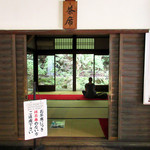
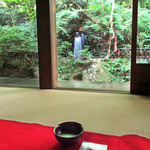

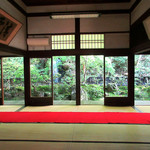
Email Login